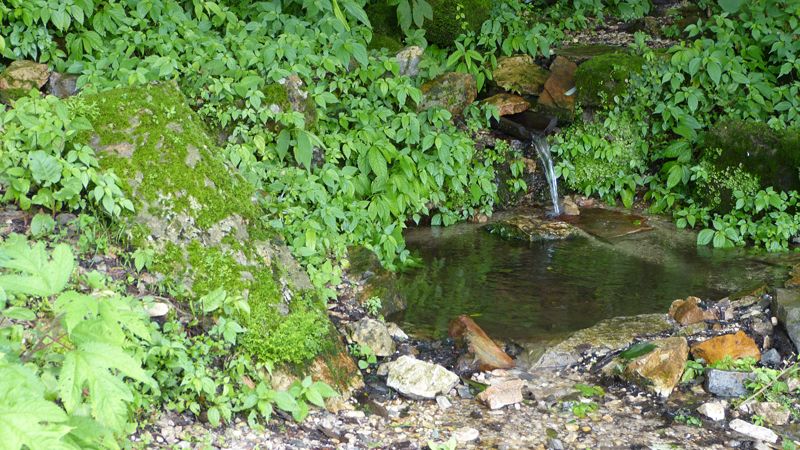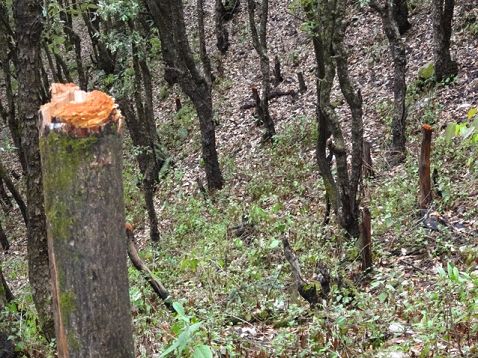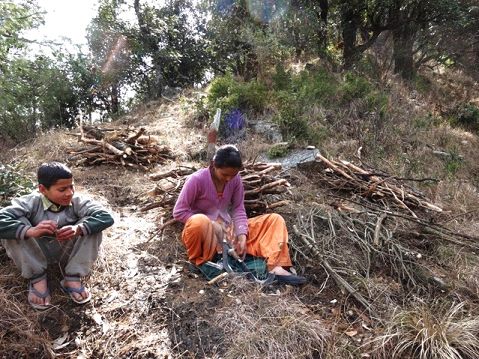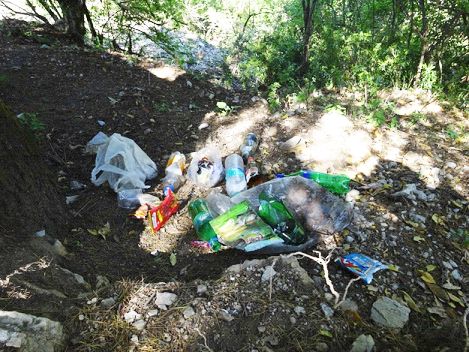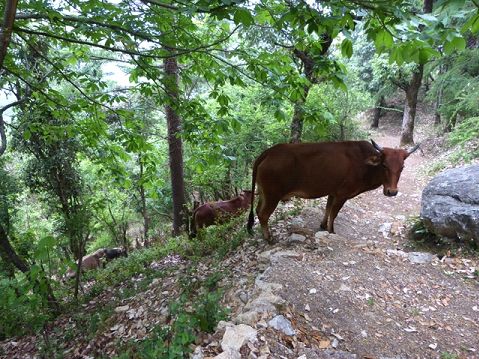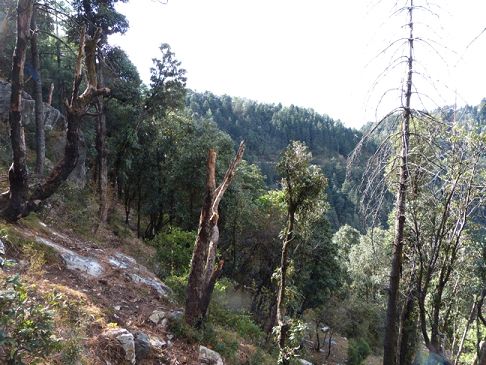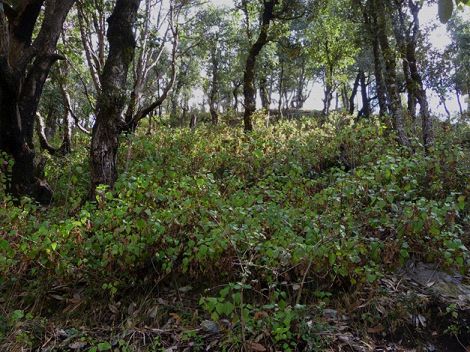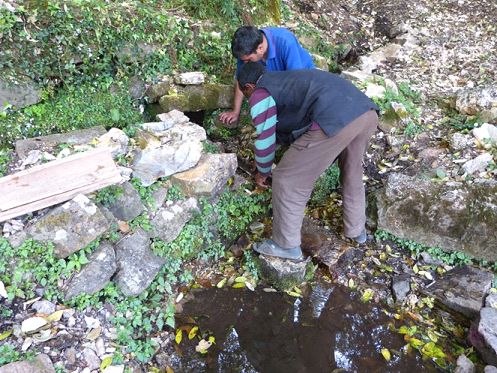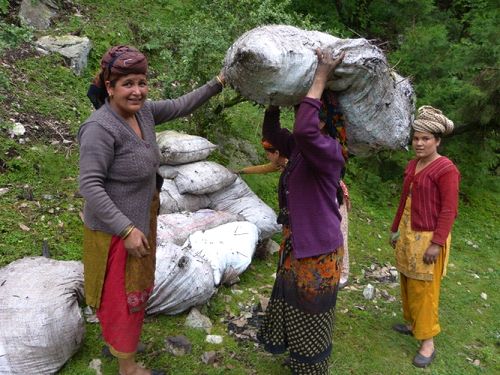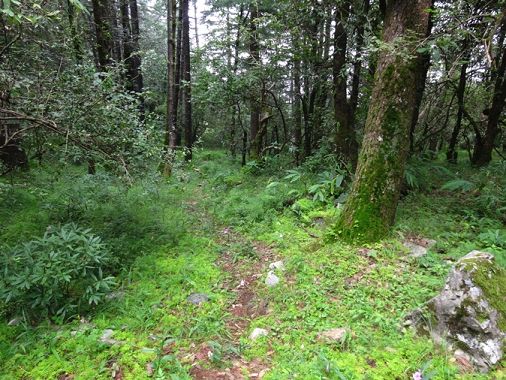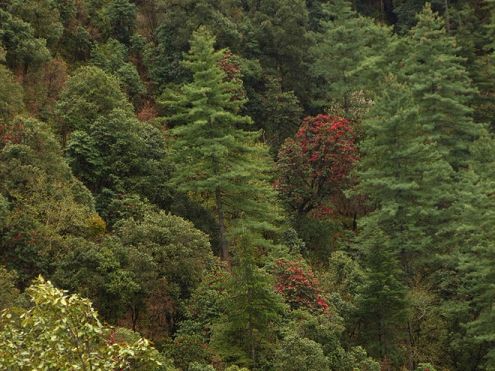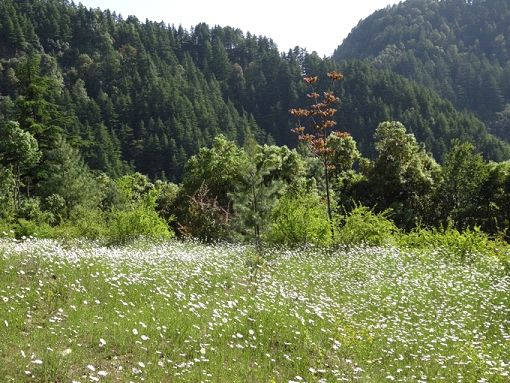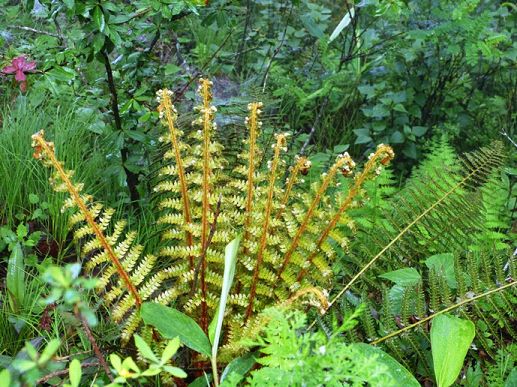Conservation
The forests of Jabarkhet and the surrounding areas have immense ecological values both for the biodiversity they harbor and the services they provide. As one of the few remaining natural forest patches near Mussoorie with connections to the Sivalik Hills and the middle Himalayas, they form an important wildlife corridor. They also sustain a critical water source that feeds into the Kolti Nala, which is the source of water supply for a large section of Mussoorie residents.
-
1950s to 1980s
During this period, Shri J P Jain, who deeply cared for the estate and the surrounding area, made serious efforts towards the conservation and management of the land and forests of Jabarkhet. The working plan for the forest was followed both in letter and spirit, leading to good regeneration in the forest. During this time, plantation of deodar, pine, and other valuable species was done in various areas of the estate. The meadows (now part of the Jabarkhet Nature Reserve) were developed into an orchard and farm. Various types of horticulture and floriculture were experimented with to see what might be suitable in the region and therefore replicable in other villages of Tehri-Garhwal. Over a hundred local people worked round the year in various activities and the place hummed with activity. Due to the active management of the forest, while trees were harvested, during this period forest cover improved and wild life was abundant in the area.
-
1980-2012
In 1980, the government banned the felling of trees in the state on slopes above 1000 metres. This ended a major economic activity at the estate and there were no longer any staff available for forest management. As the result, it was difficult to prevent unchecked use and exploitation of the area. The local villagers collected firewood all through the year by cutting and lopping trees of various species. They freely grazed cattle in the forest and collected fodder by continuously lopping oak branches. Forest fires from neighboring estates would enter the Jabarkhet Estate during summer and they were difficult to control.
Mr. J P Jain tried his best despite these limitations to protect and conserve the area. He constantly engaged with local people to educate them on how their needs could still be met by more responsible and sustainable practices. He did not allow hunting in the forest area. He continued to plant walnut, chestnut and other fruit trees in the forest. The amazing diversity of trees (and therefore other wildlife) at the Jaberkhet Nature Park is in large due to his efforts to enrich and preserve the eco-system over five decades.
However, after his death in 2007, the management of the state became even more challenging, since his descendants do not reside in Mussoorie.
While still having relatively good forest cover, the areas was in a sorry condition in many ways by 2012. Overgrazing had destroyed the ground vegetation and the hillsides were overgrown with exotic weeds. Grass collection, lopping and cutting of trees had reached alarming proportions. Forest fires were becoming increasingly frequent. Poaching had led to a decline of the wildlife population. The hillsides were covered in trash and broken glass left by umpteen visitors.
-
2012-2015
The current conservation efforts got underway in 2013, and are a joint effort between the owners of Jabarkhet Estate I and a conservation professional who has been visiting the area since the 1980s and was concerned about its deterioration. Over the last two years, we have made significant progress towards the restoration of the natural beauty and ecology of about 100 acres of the estate. During this period, over 400 kgs of trash have been removed and the area has been completely cleaned up of decades of embedded rubbish. Over three tons of the exotic weed Eupatorium has been uprooted and sections of the forest are being maintained to be "weed free" to allow native vegetation to recover. Three waterholes have been developed to augment water supply for wildlife in the area. Several hundred indigenous trees have been planted. Based on agreements with the villagers, grazing has been controlled along with hunting, tree cutting and lopping as well as grass collection and collection of other forest products. At the same time, we aim to generate jobs and employment for the local villagers and help to augment the local economy.


